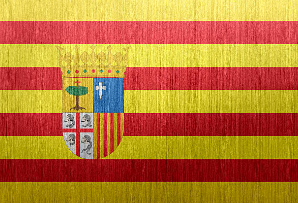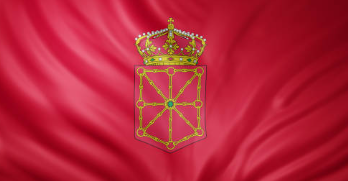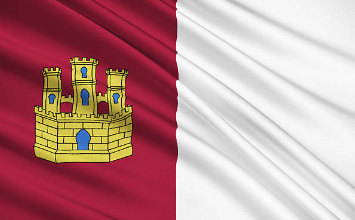
-
Discovering Aragón: Spain’s Historical and Natural Gem
Aragón, located in northeastern Spain, is a region known for its rich history, stunning natural landscapes, and cultural heritage. While it may not be as internationally famous as other Spanish regions, Aragón offers visitors a unique glimpse into Spain’s past, with medieval towns, impressive architecture, and diverse geography. From the towering Pyrenees mountains to the fertile plains of the Ebro River, this autonomous community is a hidden gem waiting to be explored.
-
Geography and Climate
Aragón covers a vast area of approximately 47,700 square kilometers and is divided into three provinces: Huesca, Zaragoza, and Teruel. The region’s geography is incredibly diverse, ranging from the Pyrenees in the north to the dry steppes in the central and southern parts. The Ebro River flows through the region, creating fertile plains that have been vital for agriculture.
The climate in Aragón varies significantly depending on the area. In the Pyrenees, winters are cold with heavy snowfall, making it a popular destination for skiing, while summers are mild. In contrast, the central plains experience hot summers and cooler winters, with more arid conditions in the southern province of Teruel.
-
Cultural and Historical Significance
Aragón has a deep-rooted historical significance in Spain. Once a powerful medieval kingdom, it played a pivotal role in the formation of the modern Spanish state. The Crown of Aragón, which united with Castile in 1469 through the marriage of Ferdinand of Aragón and Isabella of Castile, was instrumental in shaping Spain’s future.
The region’s history is reflected in its architecture, particularly in the Mudéjar style, which blends Islamic and Christian artistic elements. This unique style is especially visible in Zaragoza and Teruel, both of which are recognized as UNESCO World Heritage Sites for their exceptional Mudéjar architecture.
-
Top Attractions in Aragón
- Aljafería Palace (Zaragoza): One of the finest examples of Mudéjar architecture in Spain, the Aljafería Palace was originally built as a Moorish fortress and later converted into a Christian palace. Its intricate arches, decorative stucco, and beautiful courtyards make it a must-see.
- Basilica of Our Lady of the Pillar (Zaragoza): This iconic basilica is one of Spain’s most important pilgrimage sites. According to legend, the Virgin Mary appeared to St. James on the banks of the Ebro River, and the basilica was built to honor her. The impressive Baroque architecture and stunning views of the river make it a popular attraction.
- Ordesa y Monte Perdido National Park: Nature lovers will be captivated by the beauty of Ordesa y Monte Perdido National Park, a UNESCO World Heritage Site located in the Pyrenees. The park is home to dramatic cliffs, deep valleys, waterfalls, and a rich variety of wildlife. It’s a paradise for hikers and outdoor enthusiasts.
- Teruel: Famous for its Mudéjar towers, Teruel is a small town with a rich medieval history. Visitors can explore the Cathedral of Santa María de Mediavilla, with its beautiful Mudéjar ceiling, and the Tower of El Salvador. Teruel is also known for the story of the Lovers of Teruel, a tragic medieval love story that rivals Shakespeare’s Romeo and Juliet.
- Loarre Castle: Perched on a rocky hill, Loarre Castle is one of the best-preserved Romanesque castles in Spain. Its strategic position overlooking the plains made it a key military outpost during the Reconquista. The castle’s impressive architecture and breathtaking views make it a popular destination for history buffs.
- Albarracín: This picturesque village is often considered one of the most beautiful in Spain. Its narrow, winding streets, medieval walls, and well-preserved houses with terracotta roofs transport visitors back in time. Albarracín is also known for its nearby prehistoric cave paintings.
-
Cuisine of Aragón
The cuisine of Aragón is hearty and rustic, reflecting its agricultural roots and cold winters. Lamb is a staple, particularly in the form of ternasco de Aragón, a young roasted lamb dish that is a regional specialty. Jamón de Teruel, a type of cured ham, is also highly prized.
Other traditional dishes include migas (fried breadcrumbs with chorizo and garlic), bacalao al ajoarriero (salt cod with garlic and potatoes), and chilindrón (a stew made with chicken or lamb, peppers, and tomatoes). For dessert, trenza de Almudévar is a popular pastry made with almonds, sugar, and butter.
-
Festivals and Events
Aragón is known for its vibrant festivals, many of which are deeply rooted in the region’s religious and historical traditions. The Fiestas del Pilar, held in October in Zaragoza, is one of the largest festivals in Spain. It celebrates the Virgin of the Pillar, the patron saint of Zaragoza, with religious processions, concerts, and traditional dances.
Another important event is the La Vaquilla del Ángel in Teruel, a lively festival that takes place in July and includes bullfighting, music, and local traditions. For history enthusiasts, the Medieval Festival of Huesca is a fascinating event that recreates life in the Middle Ages, complete with jousting tournaments, medieval markets, and theatrical performances.
-
Conclusion
Aragón is a region rich in history, culture, and natural beauty. From the medieval towns of Teruel and Albarracín to the stunning landscapes of the Pyrenees and the impressive Mudéjar architecture of Zaragoza, Aragón offers a diverse range of experiences for visitors. Whether you’re a history buff, a nature lover, or a foodie, Aragón has something to offer everyone. Its unique blend of tradition and modernity makes it one of Spain’s most fascinating regions to explore.







